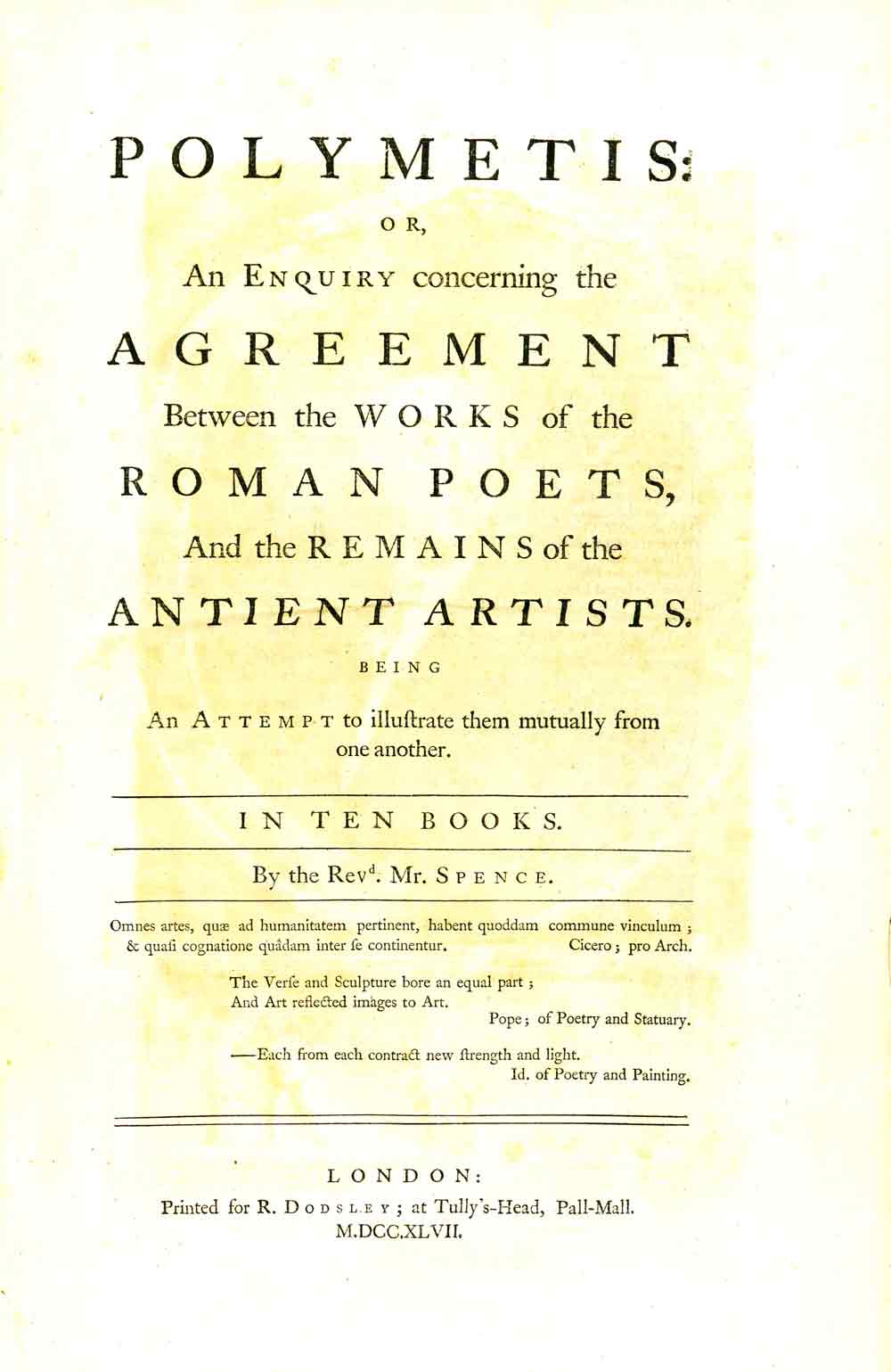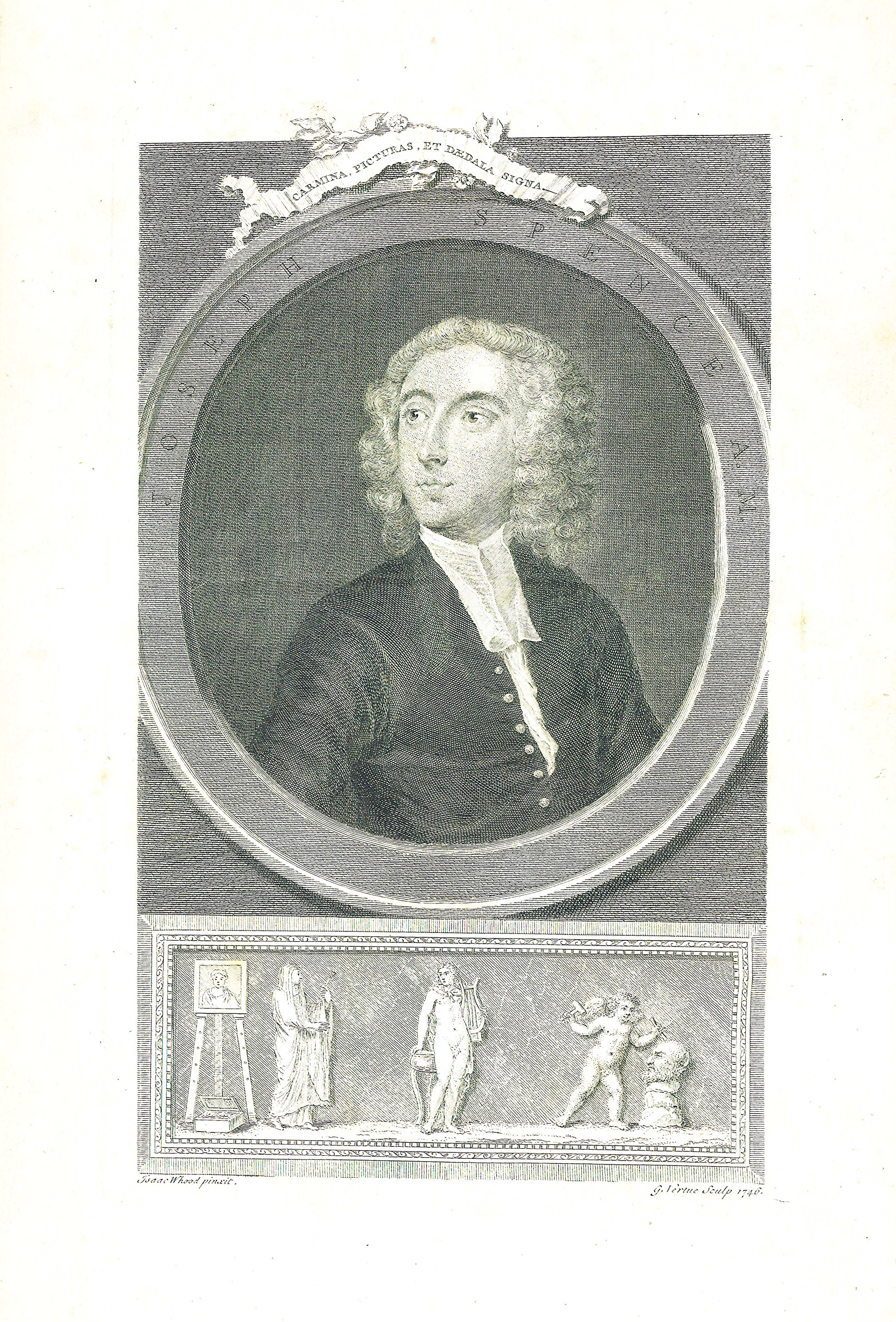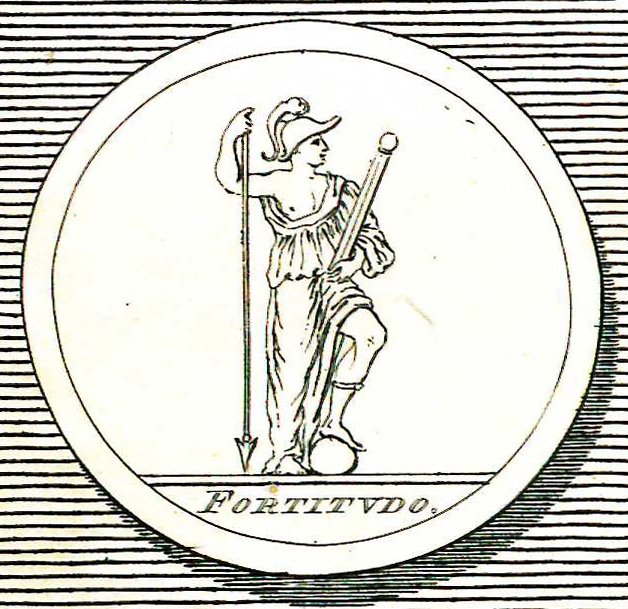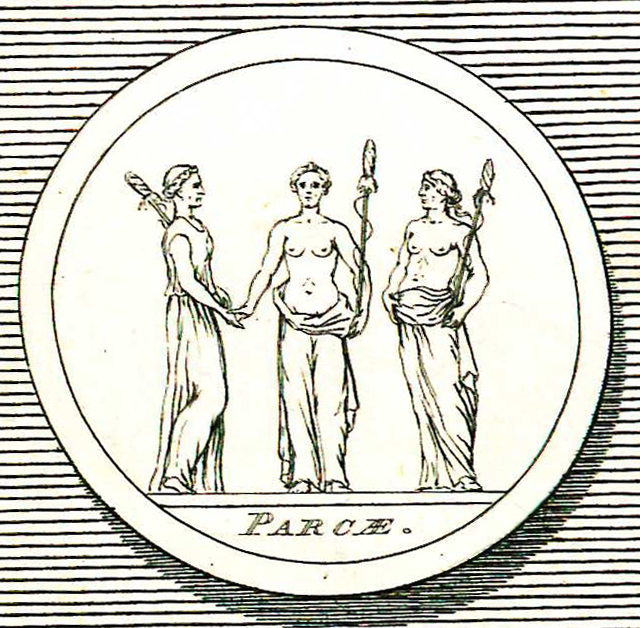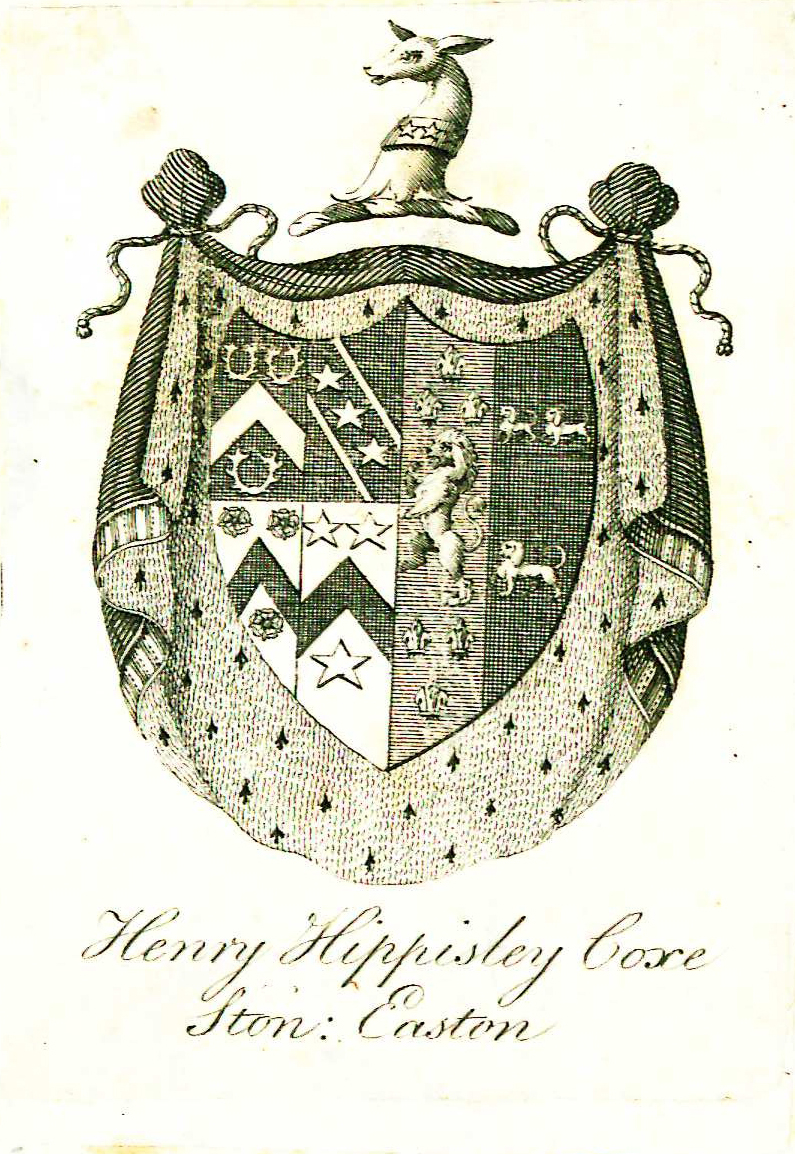Difference between revisions of "Polymetis"
(→by Joseph Spence) |
m |
||
| (49 intermediate revisions by 8 users not shown) | |||
| Line 1: | Line 1: | ||
| − | {{DISPLAYTITLE:''Polymetis''}} | + | {{DISPLAYTITLE:''Polymetis: Or, an Enquiry Concerning the Agreement Between the Works of the Roman Poets, and the Remains of the Antient Artists. Being an Attempt to Illustrate Them Mutually from One Another''}} |
===by Joseph Spence=== | ===by Joseph Spence=== | ||
| − | + | {{BookPageInfoBox | |
| − | Joseph Spence was | + | |imagename=SpencePolymetis1747.jpg |
| + | |link=https://wm.primo.exlibrisgroup.com/permalink/01COWM_INST/g9pr7p/alma991016737379703196 | ||
| + | |shorttitle=Polymetis | ||
| + | |author=[[:Category: Joseph Spence|Joseph Spence]] | ||
| + | |publoc=[[:Category: London|London]] | ||
| + | |publisher=R. Dodsley | ||
| + | |year=1747 | ||
| + | |edition=First | ||
| + | |lang=[[:Category: English|English]] | ||
| + | |pages=xii, 361 | ||
| + | |desc=[[:Category: Folios|Folio]] (42 cm.) | ||
| + | |shelf=M-5 | ||
| + | }}[[File:SpencePolymetis1747Frontispiece.jpg|left|thumb|250px|<center>Frontispiece portrait of Joseph Spence.</center>]][[wikipedia:Joseph Spence (author)|Joseph Spence]] (1699 – 1748) was an English scholar of both literature and anecdote, who spent the majority of his life traveling throughout Europe. During these travels he wrote many of his most distinguished pieces, and received inspiration for other literary works and lectures he went on to give at Oxford. [[wikipedia:Alexander Pope|Alexander Pope]] became a life-long friend to Spence and heavily influenced his work. Due in part to this friendship, Spence was elected the Oxford Chair of Poetry in 1728, and went on to become a professor of modern history at Oxford in 1742. After publishing Polymetis, Spence used his profits to fulfill his love of gardening, and he continued to produce literary works (both published and unpublished) until his death.<ref>James Sambrook, "[http://www.oxforddnb.com/view/article/26111 Spence, Joseph (1699–1768)]" in ''Oxford Dictionary of National Biography'', accessed June 11, 2013.</ref> | ||
| + | |||
| + | ''Polymetis'', published in 1747, reflected Spence’s first visit to Italy and draws upon the works he observed while there. Written in dialogue form, it provides a history and criticism on subjects such as Roman sculpture, mythological art, and Latin poetry, complete with illustrations.<ref>Joseph Spence, ''Polymetis'' (London: R. Dodsley, 1747).</ref> With a special focus on how these works of art and literature interplay and provide explanations for each other, Spence, as the title suggests, "attempt[s] to illustrate them mutually from one another."<ref>James Sambrook, “Spence, Joseph."</ref> | ||
| + | |||
| + | ==Evidence for Inclusion in Wythe's Library== | ||
| + | Listed in the [[Jefferson Inventory]] of [[Wythe's Library]] as "Spence's Polymetis. fol." and kept by [[Thomas Jefferson]]. Jefferson sold a copy to the Library of Congress, but it no longer exists to verify the edition or [[George Wythe|Wythe's]] previous ownership.<ref>E. Millicent Sowerby, ''Catalogue of the Library of Thomas Jefferson'' (Washington, D.C.: The Library of Congress, 1952-1959), 4:389 [http://babel.hathitrust.org/cgi/pt?id=mdp.39015033648125;view=1up;seq=409 [no.4230]].</ref> The [https://digitalarchive.wm.edu/handle/10288/13433 Brown Bibliography]<ref>Bennie Brown, "The Library of George Wythe of Williamsburg and Richmond," (unpublished manuscript, May, 2012) Microsoft Word file. Earlier edition available at: https://digitalarchive.wm.edu/handle/10288/13433.</ref> lists the first edition (1747) based on E. Millicent Sowerby's entry in ''Catalogue of the Library of Thomas Jefferson''. [http://www.librarything.com/profile/GeorgeWythe George Wythe's Library]<ref>''LibraryThing'', s. v. "[http://www.librarything.com/profile/GeorgeWythe Member: George Wythe]", accessed on April 21, 2013.</ref> on LibraryThing indicates "Precise edition unknown. Folio editions were published by the Dodsleys in 1747, 1755, and 1774." The Wolf Law Library followed Brown's suggestion and purchased a copy of the first edition. | ||
| − | < | + | Images from ''Polymetis'' were consulted during the creation of the seal of the Commonwealth of Virginia. Wythe was a member of the committee, along with Richard Henry Lee, George Mason, and Robert Carter Nicolas, charged in 1776 with designing the seal.<ref>''Third edition of the Code of Virginia, Including Legislation to January 1, 1874'', ed. George W. Munford (Richmond: Printed by J. E. Goode, 1873), 122, n†.</ref> The design has been attributed separately to both Wythe and Mason. In the 1873 ''Code of Virginia'', George W. Munford attempted to clarify the situation: "The design was reported to the convention by George Mason, and was adopted on the 5th of July, 1776. This has given rise to the belief by some persons and writers that Mr. Mason was the author of the design. But this is undoubtedly a mistake. The late William Munford ... stated repeatedly and explicitly to the editor that Mr. Wythe always claimed the paternity of this seal."<ref>Ibid.</ref> |
| − | + | Wythe's ownership of ''Polymetis'' strengthens the case for his authorship of the design. The Convention "who knew to whom the honor belonged, appointed Mr. Wythe and Mr. John Page, the first as the man who designed [the seal], to superintend the engraving and take care that it should be properly executed."<ref>Ibid.</ref> In performance of this task, Page wrote Jefferson: | |
| − | ''' | + | |
| + | <blockquote> | ||
| + | We are very much at a loss here for an Engraver to make our Seal. Mr. Wythe and myself have therefore thought it proper to apply to you to assist us in this Business. Can you get the work done in Philadelphia? The inclosure [sic] will be all the Directions you will require. He may be at a loss for a virtue and libertas, but you may refer him to Spence's ''Polymetis'' which must be in some Library in Philadelphia.<ref>''The Papers of Thomas Jefferson'', Julian P. Boyd, ed. (Princeton: Princeton University Press, 1950), 1:468.</ref> | ||
| + | </blockquote> | ||
| − | ''' | + | A comparison of the figures of "Fortitudo" and "Parcae" from ''Polymetis'' with the obverse and reverse of the Great Seal of the Commonwealth of Virginia demonstrates the obvious link between Spence's book and the seal's design. |
| − | ''' | + | <gallery widths=230px heights=230px perrow=3> |
| + | File:SpencePolymetis1747Fortitudo.jpg|<center>Fortitudo, plate XI, ''Polymetis''.</center> | ||
| + | File:SpencePolymetis1747Parcae.jpg|<center>Parcae, plate XXIII, ''Polymetis''.</center> | ||
| + | </gallery> | ||
| − | + | <gallery widths=230px heights=230px perrow=3> | |
| + | File:GreatSealOfTheCommonwealthOfVirginia1894Obverse.jpg|<center>The Great Seal of the Commonwealth of Virginia, 1776-1894 (Obverse).</center> | ||
| + | File:GreatSealOfTheCommonwealthOfVirginia1894Reverse.jpg|<center>The Great Seal of the Commonwealth of Virginia, 1776-1894 (Reverse).</center> | ||
| + | </gallery> | ||
| − | == | + | Wythe himself was modest regarding his participation in the endeavor. In a [[Wythe to Thomas Jefferson, 18 November 1776|November 18, 1776 letter]] to Jefferson, he wrote "I understood by the person employed to draw the figures for our great Seal that you intended to propose an alteration in whole in the reverse. I wish you you would propose it; for though I had something to do in designing them, I do not like them."<ref>"[http://memory.loc.gov/cgi-bin/ampage?collId=mtj1&fileName=mtj1page001.db&recNum=709 Wythe to Thomas Jefferson, 18 November 1776]", in ''The Thomas Jefferson Papers Series 1 General Correspondence 1651-1827'', (Washington DC: Library of Congress, 1974), images 710-713.</ref> But, as one Wythe biographer wrote "the originality of the seal and its classicism of concept, in contrast to the seals of other States, which drew on the forms of feudal heraldry, suggest that Wythe strongly influenced the design."<ref>Alonzo Thomas Dill, ''George Wythe: Teacher of Liberty'' (Williamsburg, VA: Virginia Independence Bicentennial Commission, 1979), 36.</ref> In his work on the seals of Virginia, Edward S. Evans agrees that Wythe is the more likely author of the seal, remarking "the facts...[seem] to offer a stronger claim for the authorship by George Wythe than any that has ever been advanced for Mason."<ref>Edward S. Evans, "Virginia State Library: The Seals of Virginia," in ''Seventh Annual Report of the Library Board of the Virginia State Library, 1909-1910, to Which is Appended the Seventh Annual Report of the State Librarian'' (Richmond: Davis Bottom, Superintendent of Public Printing, 1911), 32.</ref> |
==Description of the Wolf Law Library's copy== | ==Description of the Wolf Law Library's copy== | ||
| − | Bound in contemporary calf with gilt spine and red spine label. | + | {{BookPageBookplate |
| − | ===References=== | + | |imagename=SpencePolymetis1747Bookplate.jpg |
| + | |display=left | ||
| + | |caption=Armorial bookplate of Henry Hippisley Coxe, front pastedown. | ||
| + | }}Bound in contemporary calf with gilt spine and red spine label. Includes the armorial bookplate of Henry Hippisley Coxe, Ston: Easton on the front pastedown. Purchased from The Bookpress, Ltd. | ||
| + | |||
| + | Images of the library's copy of this book are [https://www.flickr.com/photos/wolflawlibrary/albums/72157655548064053 available on Flickr.] View the record for this book in [https://wm.primo.exlibrisgroup.com/permalink/01COWM_INST/g9pr7p/alma991016737379703196 William & Mary's online catalog.] | ||
| + | |||
| + | ==See also== | ||
| + | <div style="overflow: hidden;"> | ||
| + | *[[George Wythe Room]] | ||
| + | *[[Jefferson Inventory]] | ||
| + | *[[Wythe's Library]] | ||
| + | </div> | ||
| + | |||
| + | ==References== | ||
| + | <div style="overflow: hidden;"> | ||
<references/> | <references/> | ||
| + | </div> | ||
| − | [[Category:Books]] | + | __NOTOC__ |
| + | [[Category:Art]] | ||
| + | [[Category:George Wythe Collection at William & Mary's Wolf Law Library]] | ||
| + | [[Category:Jefferson's Books]] | ||
| + | [[Category:Joseph Spence]] | ||
[[Category:Titles in Wythe's Library]] | [[Category:Titles in Wythe's Library]] | ||
| + | |||
| + | [[Category:English]] | ||
| + | [[Category:Folios]] | ||
| + | [[Category:London]] | ||
Latest revision as of 11:23, 9 August 2023
by Joseph Spence
| Polymetis | |
|
Title page from Polymetis, George Wythe Collection, Wolf Law Library, College of William & Mary. | |
| Author | Joseph Spence |
| Published | London: R. Dodsley |
| Date | 1747 |
| Edition | First |
| Language | English |
| Pages | xii, 361 |
| Desc. | Folio (42 cm.) |
| Location | Shelf M-5 |
Polymetis, published in 1747, reflected Spence’s first visit to Italy and draws upon the works he observed while there. Written in dialogue form, it provides a history and criticism on subjects such as Roman sculpture, mythological art, and Latin poetry, complete with illustrations.[2] With a special focus on how these works of art and literature interplay and provide explanations for each other, Spence, as the title suggests, "attempt[s] to illustrate them mutually from one another."[3]
Evidence for Inclusion in Wythe's Library
Listed in the Jefferson Inventory of Wythe's Library as "Spence's Polymetis. fol." and kept by Thomas Jefferson. Jefferson sold a copy to the Library of Congress, but it no longer exists to verify the edition or Wythe's previous ownership.[4] The Brown Bibliography[5] lists the first edition (1747) based on E. Millicent Sowerby's entry in Catalogue of the Library of Thomas Jefferson. George Wythe's Library[6] on LibraryThing indicates "Precise edition unknown. Folio editions were published by the Dodsleys in 1747, 1755, and 1774." The Wolf Law Library followed Brown's suggestion and purchased a copy of the first edition.
Images from Polymetis were consulted during the creation of the seal of the Commonwealth of Virginia. Wythe was a member of the committee, along with Richard Henry Lee, George Mason, and Robert Carter Nicolas, charged in 1776 with designing the seal.[7] The design has been attributed separately to both Wythe and Mason. In the 1873 Code of Virginia, George W. Munford attempted to clarify the situation: "The design was reported to the convention by George Mason, and was adopted on the 5th of July, 1776. This has given rise to the belief by some persons and writers that Mr. Mason was the author of the design. But this is undoubtedly a mistake. The late William Munford ... stated repeatedly and explicitly to the editor that Mr. Wythe always claimed the paternity of this seal."[8]
Wythe's ownership of Polymetis strengthens the case for his authorship of the design. The Convention "who knew to whom the honor belonged, appointed Mr. Wythe and Mr. John Page, the first as the man who designed [the seal], to superintend the engraving and take care that it should be properly executed."[9] In performance of this task, Page wrote Jefferson:
We are very much at a loss here for an Engraver to make our Seal. Mr. Wythe and myself have therefore thought it proper to apply to you to assist us in this Business. Can you get the work done in Philadelphia? The inclosure [sic] will be all the Directions you will require. He may be at a loss for a virtue and libertas, but you may refer him to Spence's Polymetis which must be in some Library in Philadelphia.[10]
A comparison of the figures of "Fortitudo" and "Parcae" from Polymetis with the obverse and reverse of the Great Seal of the Commonwealth of Virginia demonstrates the obvious link between Spence's book and the seal's design.
Wythe himself was modest regarding his participation in the endeavor. In a November 18, 1776 letter to Jefferson, he wrote "I understood by the person employed to draw the figures for our great Seal that you intended to propose an alteration in whole in the reverse. I wish you you would propose it; for though I had something to do in designing them, I do not like them."[11] But, as one Wythe biographer wrote "the originality of the seal and its classicism of concept, in contrast to the seals of other States, which drew on the forms of feudal heraldry, suggest that Wythe strongly influenced the design."[12] In his work on the seals of Virginia, Edward S. Evans agrees that Wythe is the more likely author of the seal, remarking "the facts...[seem] to offer a stronger claim for the authorship by George Wythe than any that has ever been advanced for Mason."[13]
Description of the Wolf Law Library's copy
Bound in contemporary calf with gilt spine and red spine label. Includes the armorial bookplate of Henry Hippisley Coxe, Ston: Easton on the front pastedown. Purchased from The Bookpress, Ltd.
Images of the library's copy of this book are available on Flickr. View the record for this book in William & Mary's online catalog.
